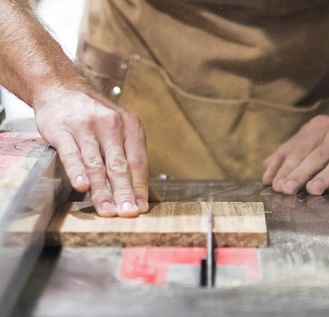 At last month’s HD Expo in Las Vegas, there were many companies that caught my attention. One was Vancouver, B.C.-based ChopValue. The company is diverting millions of wooden chopsticks from landfills by converting them into high-performance composite material. The material is manufactured using proprietary technology that compresses recycled bamboo chopsticks along with a water-based resin, making it harder than maple, stronger than oak, and as durable as teak. Tables, wall décor, coasters, cutting boards, and many other items can be made with the material. The chopsticks are picked up from local businesses and converted to useable products in micro factories around the world. In Metro Vancouver, more than 350,000 chopsticks a week are collected. “Waste” is diverted from the landfill and the companies using the chopsticks no longer must pay to take them away.
At last month’s HD Expo in Las Vegas, there were many companies that caught my attention. One was Vancouver, B.C.-based ChopValue. The company is diverting millions of wooden chopsticks from landfills by converting them into high-performance composite material. The material is manufactured using proprietary technology that compresses recycled bamboo chopsticks along with a water-based resin, making it harder than maple, stronger than oak, and as durable as teak. Tables, wall décor, coasters, cutting boards, and many other items can be made with the material. The chopsticks are picked up from local businesses and converted to useable products in micro factories around the world. In Metro Vancouver, more than 350,000 chopsticks a week are collected. “Waste” is diverted from the landfill and the companies using the chopsticks no longer must pay to take them away.
Felix Böck hatched the concept for ChopValue and uses a franchise model to expand the business.
The Benefits of Bamboo
In North America, over 90 percent of disposable chopsticks are made from bamboo, with the remaining percentage being wooden. Bamboo is preferred because it grows much faster than wood, meaning bamboo forests can be replenished more quickly than wood-based forests, thus making it more sustainable to use bamboo chopsticks.
Why not just compost the millions of used chopsticks? According to ChopValue, composting generally will emit the embodied carbon content of the chopsticks back into the air as CO2. Given that bamboo is a fast-growing grass, it is one of the best materials to use for carbon sequestration. But to continue sequestering the carbon, its life needs to be extended as long as possible.
Most chopsticks come from bamboo harvested in China. To make disposable chopsticks, the bamboo is harvested, treated, dried, and shaped into chopsticks. These chopsticks then get shipped around 9,000 kilometers to North America, to be used in just one meal. That is a lot of meal miles. Once used, chopsticks are normally thrown away without a second thought.
Click here to learn more about ChopValue.






